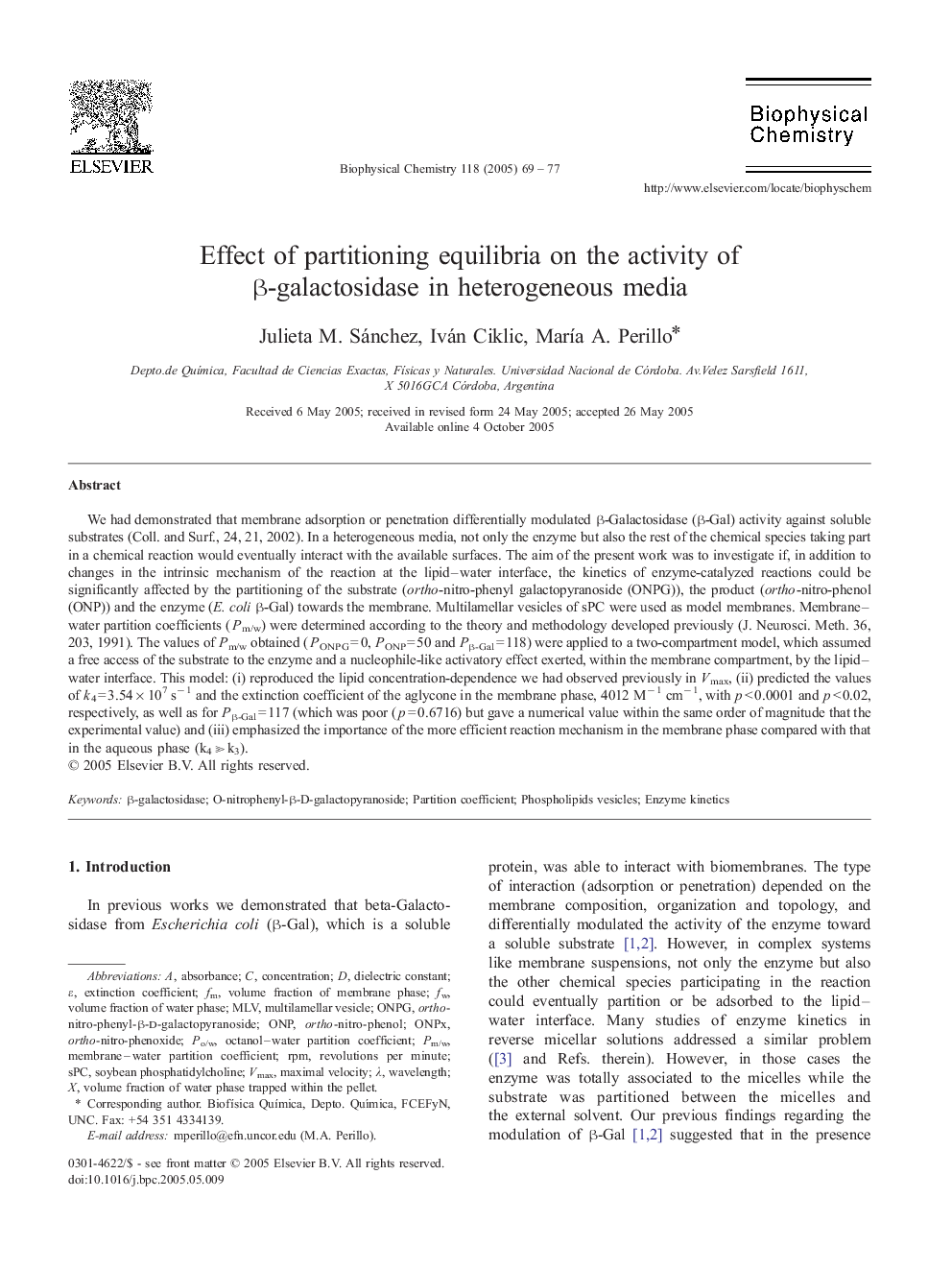| Article ID | Journal | Published Year | Pages | File Type |
|---|---|---|---|---|
| 9573220 | Biophysical Chemistry | 2005 | 9 Pages |
Abstract
We had demonstrated that membrane adsorption or penetration differentially modulated β-Galactosidase (β-Gal) activity against soluble substrates (Coll. and Surf., 24, 21, 2002). In a heterogeneous media, not only the enzyme but also the rest of the chemical species taking part in a chemical reaction would eventually interact with the available surfaces. The aim of the present work was to investigate if, in addition to changes in the intrinsic mechanism of the reaction at the lipid-water interface, the kinetics of enzyme-catalyzed reactions could be significantly affected by the partitioning of the substrate (ortho-nitro-phenyl galactopyranoside (ONPG)), the product (ortho-nitro-phenol (ONP)) and the enzyme (E. coli β-Gal) towards the membrane. Multilamellar vesicles of sPC were used as model membranes. Membrane-water partition coefficients (Pm/w) were determined according to the theory and methodology developed previously (J. Neurosci. Meth. 36, 203, 1991). The values of Pm/w obtained (PONPG = 0, PONP = 50 and Pβ-Gal = 118) were applied to a two-compartment model, which assumed a free access of the substrate to the enzyme and a nucleophile-like activatory effect exerted, within the membrane compartment, by the lipid-water interface. This model: (i) reproduced the lipid concentration-dependence we had observed previously in Vmax, (ii) predicted the values of k4 = 3.54 Ã 107 sâ 1 and the extinction coefficient of the aglycone in the membrane phase, 4012 Mâ 1 cmâ 1, with p < 0.0001 and p < 0.02, respectively, as well as for Pβ-Gal = 117 (which was poor (p = 0.6716) but gave a numerical value within the same order of magnitude that the experimental value) and (iii) emphasized the importance of the more efficient reaction mechanism in the membrane phase compared with that in the aqueous phase (k4 â«Â k3).
Keywords
Po/wRPMONPGONPMLVSPCVmaxO-nitrophenyl-β-D-galactopyranosideβ-galactosidaseDielectric constantAbsorbancemaximal velocityrevolutions per minuteEnzyme kineticsExtinction coefficientPartition coefficientoctanol–water partition coefficientWavelengthconcentrationSoybean phosphatidylcholineMultilamellar vesicle
Related Topics
Physical Sciences and Engineering
Chemistry
Physical and Theoretical Chemistry
Authors
Julieta M. Sánchez, Iván Ciklic, MarÃa A. Perillo,
